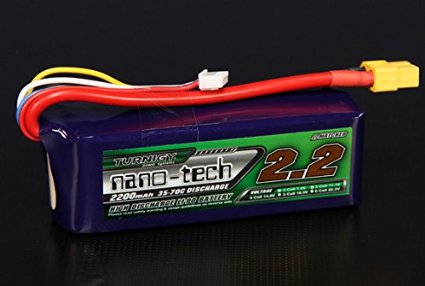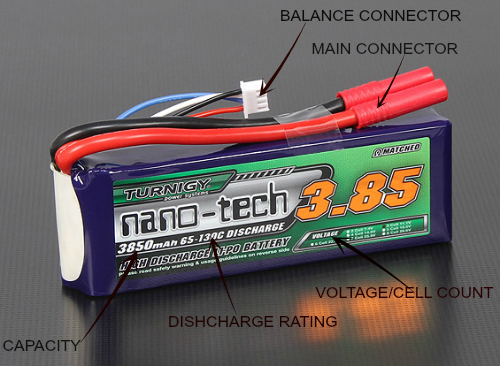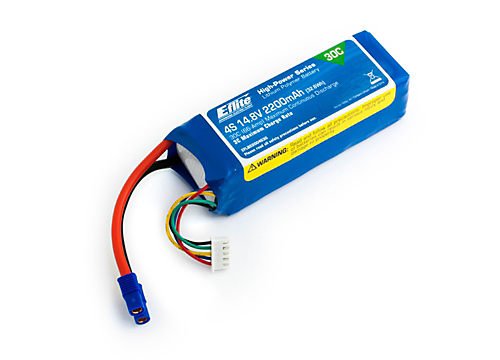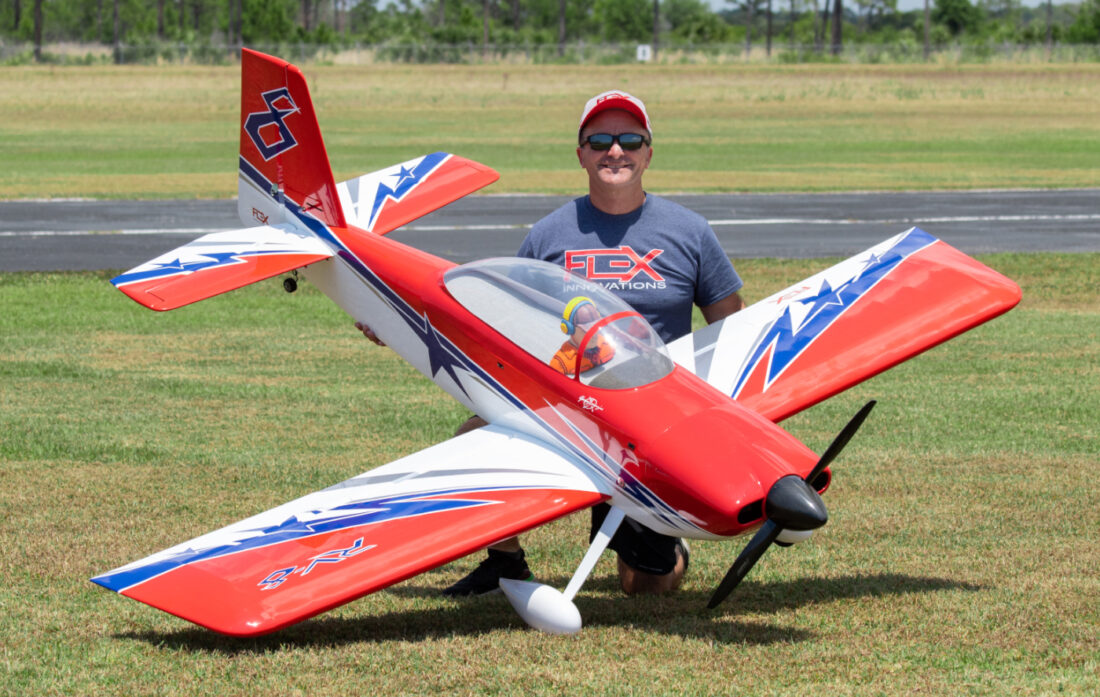The best Lipo battery for RC planes,RC helicopters and drones
How to select the best lipo battery for your flying application.The basic theory and safe practices are discussed and how to avoid a lipo battery fire.

The development of the modern Lithium Polymer (Lipo) battery has made the current crop of airborne vehicles possible. Never before have we been able to use as much electrical power in such a small, light weight package.
The price we must pay for this is offset by the chance of fire! I believe the fire risk can be minimized to the point where it is no longer of concern and we will take you through the steps of selecting the best lipo battery for your application.
Page Contents
Lipo Battery Info
If you are replacing an existing battery, or buying another one to extend a flying session, then the first question to ask is what is the physical space available?
It may be possible to use a more up-to-date lipo, that is smaller than the original and maybe has a more electrical capacity (measured in mAh, displayed on the battery) or maybe a larger capacity battery can be used in the space available. (Please check the balance point if a heavier battery is used).
The next information is the voltage of the pack. Lipo cells have a nominal charged voltage of 3.7 volts per cell. Cells are connected together, in series, to generate the voltage required. Thus a 1S battery will be 3.7V nominal, a 2S pack will be 7.4V, a 3S will be 11.1v and so on.
The maximum size generally used today, in a single battery is a 6S pack(22.2V). If a higher voltage is required, then packs can be connected together in series.
The information on this page, should show you how to select the best lipo battery for your application.
Reviews to find the Best Lipo Battery
Here are the lipo batteries that I have used and my impression of each, from the expensive to the less expensive ( I don't like the word "cheap")
In my experience, they have been the "best lipo battery" for my applications.
This is the least expensive of the 3 batteries reviewed here-but it's quality of construction and life so far, is the same as the Nano-Tech mentioned here. The price is about a half of the Nano-Tech, so I would class this as a real bargain.The best lipo battery in this case!
It flies in the Mosquito and gives the same flight time as the Nano-Tech.
 The Turnigy Nano-Tech 4S 2200mAh Lipo battery
The Turnigy Nano-Tech 4S 2200mAh Lipo batteryThis one is in the middle of the price range, but has the highest discharge rate of 35-70C. It does come with the XT-60 connector. It has given me excellent service in the de-Havilland Mosquito.
Like the other batteries reviewed here, it comes in a heavy duty heat shrink plastic covering that gives good protection.
I would expect a shorter life (because of the lower price), but so far so good!
This was the very first Lipo I bought, quite a few years ago and I still have it! E-Flite are sold by Horizon Hobby and are at the upper end of the price list. However the quality is top class and Horizon has, in my experience, a superb after sales service.
It comes with Horizon's standard EC3 connector, which I replaced, by soldering on a Deans. Today I would use the adapter, as explained below. Notice it has a 30C discharge rate.
I have been using a 3200mAh version in my de-Havilland Beaver for many years with complete success.
I have no hesitation in recommending any size of E-Flite Lipo battery.
Here we have a sample of the largest capacity battery that I own. I use two of these, wired in parallel, in my 1/4 scale Piper Cub.
Notice that this battery has a 50C charge rate and can be fast charged very quickly.
The connectors are very interesting as there are solderless adapters for XT 60, Deans (T type)or EC3 connectors.
These batteries have US support and a 1 year warranty, with a 30 % discount after that period on a replacement.
This is a high capacity battery for the larger models, Size-5.9"x1.7"x1.6"(149.5mmx40.5mmx44mm). Weight is 1.4 lbs(0.63kg)
Lipo Battery Numbers

- Lipo battery voltage/cell count-This is sometimes requires the supplier to black in a circle, on a "universal" label. Remember that each cell has a nominal voltage of 3.7V, so the indicated value will show the pack voltage and cell count.
- Capacity- This is usually shown in mAh (3850 mAh in photo). This is also shown as 3.85, which is the capacity in Ah.(Amp Hours)
- Discharge Rating-This represents the maximum current that the battery can draw. In this case the 65C is the maximum continuous current=65 x 3.85A=250 Amps. The 130C number is the burst current=130 x 3.85A=500.5 Amps. This can only be sustained for 10 secs or less. (Example during acceleration) Note that this C rating for this battery, is very high and is usually in the 20 to 30 range. Look at the ratings for the motor to determine if the battery is within an acceptable range. Always be conservative in the ratings game!
- Charge Rate. This number is not shown on this label, but is shown in the instruction sheet. It can be from 1 to maybe 15 for some lipos. The higher the number, the faster the battery can be charged. Fast charging can be very helpful, in the field, but beware! It can result in a fire if too fast a rate is chosen. I much prefer to use a 1C charge rate. In this example that would be 1 x 3.85A=3.85A. This does mean that charging can be a long time but it is much safer.
How to prevent a lipo battery fire
You may think you have the best lipo battery, but even those can be a fire hazard!
First of all, double check every connection you make or are about to make to ensure polarity is correct! Make absolutely sure that positive leads are only connected to positive leads and the same with negative leads.
This may sound very basic but mistakes can happen! If polarity is reversed then the lipo will burst into flames! This happened to me recently and was I shocked! Fortunately no serious damage resulted, but I did loose a good battery and destroyed an ESC.
The other most common situation where fires can happen, is during the charging of lipo batteries. Only use a charger that is specifically intended to charge lithium polymer batteries and has the capacity to charge your pack.
If your battery came with a charger then you are probably OK. Just ensure that any switches are in the correct position and read the manual that came with your package.
It is a good idea to use a fireproof charging bag, during the charge cycle. That way, if a fire does start, then it can be contained and hopefully no damage to property will result.
Lipo Battery Connectors
The best lipo battery connectors are the ones that work for you! You have to decide which connector system you would prefer and then, if required, replace, by soldering on your connector of choice or use an adapter.
The Deans or "T"

The first connector, maybe the most popular, is the Deans or T-connector. This was my choice, when I first entered the field of electric RC airplanes. The photo shows a female connector, typically attached to the battery. Deans (a US company) are the inventor of this connector and the off-shore equivalent is called the "T" connector.
The EC3

This is the connector used by Horizon Hobby, so it is very widely used today. A little difficult to solder but it does make a dependable connection.
The photo shows the female connector, attached to the battery.
The Anderson

This one has been around the hobby since the beginning of electric power. It is inherited from the Ham radio industry and is unique in that it is hermaphroditic. That is a long name that means it is non-sexual, so you do not have to be concerned with male or female, all connectors can mate!
They do take up a lot of space, but some modelers would use nothing else. They can be crimped to the cable, rather than soldered but the crimping tool is not cheap!
The XT60

The XT60 is used by HobbyKing and most of the Lipo batteries sold direct from China. It is a good connector that is simple to solder and rapidly becoming popular.
As well as the yellow color shown above they are also available in a blue shade.
The contacts are gold plated and molded in during the forming process.
I don't think that any of these can be described as the "best Lipo battery connector" Each battery manufacturer favors there own and all are good quality and should perform well.
I must thank Roger's Hobby Center for the use of the photos of the connectors. They have an excellent hobby shop and also an article on their web site regarding lipos. Click here to see this informative article.
The Alternative to Soldering to Provide the Best lipo battery
Some people find soldering a challenge and the alternative is to use connector adapters. I started to do this and find the results very good. Some purists will object that the more connectors their are, the greater the chance of a problem. But I think that a solid, well built adapter is much preferable to a poorly soldered connector,especially if our aim is to produce the best lipo battery assembly we can!
Now when I buy a new battery, I also order the appropriate adapter. The links below may help you locate the one you need.
Deans Female to XT60
If you click on the photo, or here, you will be taken to the correct page on Amazon, that lists a lot of Deans(T-connectors) adapters. Scroll through to find the one you need to make that best lipo battery assembly!
XT60 Male to EC3 Female
A click on this photo, or here will take you to Amazon and a list of XT60 adapters.
EC3 Male to Deans Female
The final adapter we will show is for the EC3 connectors. Click on the photo or here to visit Amazon for more information.
Lipo Battery Voltage for Storage
I have been used to storing re-chargeable batteries at full voltage, for a long time. The nicd and nimh packs we have been using for years always seemed to prefer a full charge or no charge when in storage. The lipo is different! They should be stored at a voltage of approximately 3.8V per cell .
When at full charge, they will be at 4.2V per cell and the nominal voltage is 3.7V.
When you return from a flying session, connect the batteries up to your charger and select "Storage". The battery will be charged or discharged until the 3.8V per cell level is reached. Now it can be safely stored, until the next flying session. Remember I prefer to charge at a 1C rate, so I charge the night before I am planning a visit to the club field.
By using this storage voltage, the life of your batteries will dramatically increase!
How to Select the Best Lipo Battery for a new project
If you are designing your own electric installation then you must do a few calculations. I found, awhile ago, that the tables shown on the Castle Creations web site save a lot of time and are accurate.
They have tables for prop driven airplanes, ducted fans and helicopters. Click here to visit their site and use these very useful tools.
Lipo Battery Puffing
Lipos do Puff-up or bulge sometimes. If it is only a small amount and the battery still takes a full charge and lasts as long as it always did, then you can continue to use it.
It may be a sign that the life of the battery is coming to an end, so keep a close eye on it's performance.
DO NOT try to relieve the bulge by piercing the covering! If you try this, it will not work and a fire or other nasty things may happen! I have heard of many fixes for this problem but none of them can be safe.
Even the best lipo battery can start to "puff" and I have tried a few thing to try to reduce it, but for me none of them work! (Like putting them in the freezer).
Lipo Battery Disposal
When a battery is no longer of use to us, because it cannot take a full charge or runs down too fast, it still may contain electrical power and thus could still cause a fire.
Before dumping it in the trash, it should be completely discharged. One way of doing this is to leave it in a salt water solution until the volt meter shows 0 volts. Add salt to a bucket of water, until no more will dissolve, then dump in the old battery. Leave it for 24 hours and check the voltage,
You can make a simple discharge device by soldering wires and a connector onto an automotive light bulb, connect it to the battery and let it sit. Be careful and use a lipo discharge bag as batteries can get hot when voltage is very low.
It is worth checking at your local hobby shop. Some do offer a lipo disposal service that can make this procedure very simple!
Conclusions: How to make the Best Lipo Battery last!
- Be very conservative in charging and discharging your lipos, by using a good charger and do not keep flying until there are zero volts left!
- Do discharge or charge your batteries to the storage level,(3.8V per cell) in between flying sessions.(This is important!)
- Check that the polarity is correct before connecting the battery.
- Become VERY good at soldering connectors, or use a connector adapter.















